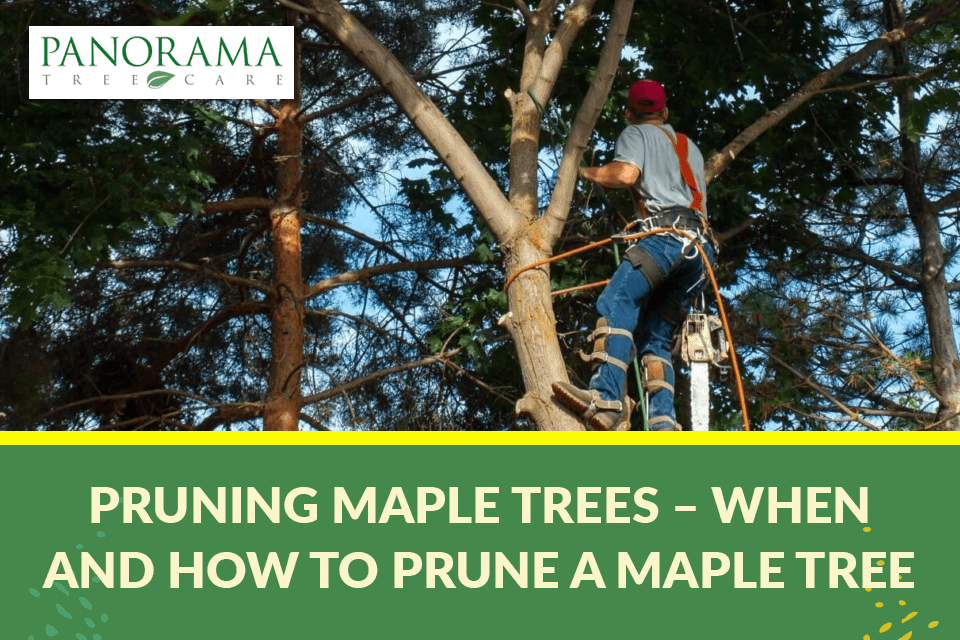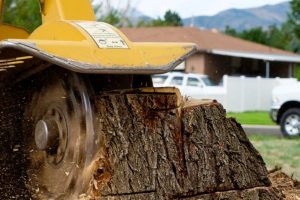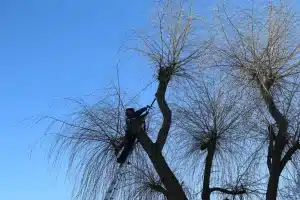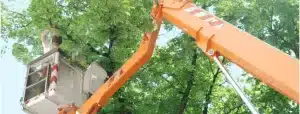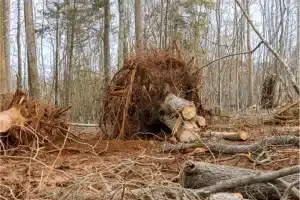Pruning is important for tree health. It helps in the proper development and also in retaining the shape of the tree.
And it’s no different for that yellow, orange, and red foliage maple tree in your backyard. Pruning maple trees is an essential part of their tree maintenance and it is important to learn when and how to prune a maple tree.
If you’re in the Tampa area and need help with tree pruning, consider reaching out to tree pruning experts for professional assistance.
What is the Right Time for Trimming Maple Trees?
Some gardeners believe that maple trees are best pruned in the summer months since it is fully leafy and no sap leaks out from the wounds.
Trimming a maple tree in late winter makes it look as if the tree is suffering since warmer days and colder nights cause the saps to flow out freely from the wounds.
The young maple trees are ideally pruned between mid-July and early August. This is the time when the tree reaches the lowest sap level under the bark. The cuts heal faster with hardly any risk of fungal infections.
Which Part of the Tree Needs Pruning?
This is crucial. You can start by trimming the little twigs coming off the stem. Follow it up by identifying and cutting off the u-shaped or split limbs since they shorten the life span of the tree during maturity. Now comes the trickiest part.
Identify the shoots and branches that are obstructing other branches, scarping other branches, and also the broken and diseased parts. Cut off the dead parts as well.
Don’t forget to rake up twigs and leaves and clear away the debris accumulating at the base to ensure that no pests or diseases proliferate. If by any means the weak or dead limb gets infected by the fungus it will surely spread to the main tree.
Tools for Pruning Maple Trees
You must have the entire set of pruning or tree-trimming equipment before you decide trimming maple trees. Most importantly you must have the right set of tools.
The basic pruning equipment that you need is:
- Pruning shears
- Pole Saw
- Long-handled loppers
- Japanese pruning saw
Basic Instructions for Pruning
The first step would be identifying the deformed branches, dead limbs, weak crotches, rubbing limbs, and water sprouts. Start trimming a maple tree by removing the weak, dead, and damaged branches. Now, look at the top of the tree to figure out the main trunk.
If there are equally dominant leader trunks, select the strongest to be the leader and reduce 1/3rd of the competing trunks or remove them completely. The leader trunk is best left untrimmed.
Use sharp, clean shears with appropriate cutting strength to cut off small branches. If the limbs are diseased disinfect the shears with a bleach solution and continue.
Prune close to the trunk without leaving any stubs. Remove the branches that are rubbing close to each other. Extremely weak and narrow crotch angles are to be removed.
Do not remove more than 30% of crown foliage in a year. Cut off suckers from the base. If it’s a young maple cut off a few of the lower branches closer to the trunk. This helps in raising the crown.
Do not at any cost overdo pruning. Check out every step of the trimming process to ensure that the canopy is rounded nicely in a manner that is pleasing to the eye and also supports adequate air circulation.
Lastly, do not apply wound dressing or tree paint to the cuts. It hinders the natural healing process of maple trees.
Don’t forget if it’s a young maple you can do it yourself otherwise, get professional trimmers to do the job for you. Remember, pruning the canopy or high-set branches of a mature tree is significantly risky and requires certified arborists from tree trimming services. Professional tree service ensures that certified tree care specialists do the job by using appropriate safety equipment.
Bottom Line
Maple trees lend a majestic and striking focal point to any landscape. Following basic pruning instructions can keep your maple in top form. If, however, you want to ensure proper tree health depending on the size of the tree, then it is advisable to seek professional help from experts to do the job for you.

